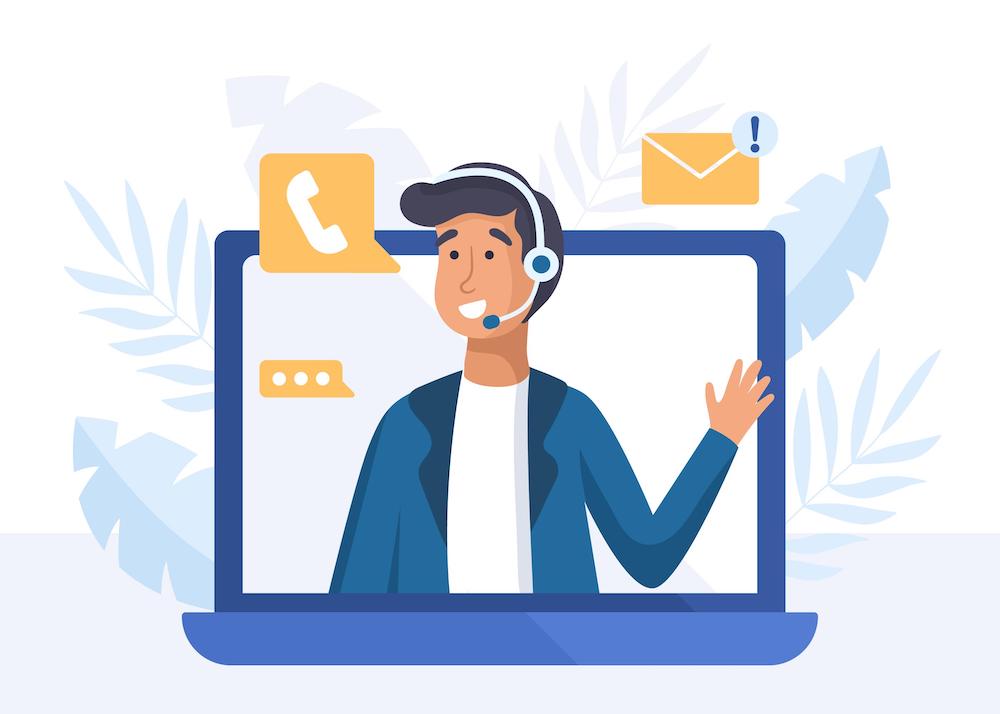
Following up on prospects is one of the most important steps in the sales process. However, it is often a difficult and frustrating task. After many follow-up emails and phone calls, it may be very discouraging when prospects still don’t answer.
Fortunately, there are effective methods to follow up on prospects and increase conversion rates.
Let’s go through 5 of the best methods to follow up on a prospect and maintain an active sales pipeline.
#1 Vary your communication channels
Emails are considered the most common and practical way to follow up on prospects. However, sending emails repeatedly can quickly become ineffective and dull for the potential customer.
To solve this, you can vary your communication channels, in order to avoid becoming monotonous and hook your prospect.
Sending an email isn’t the only way to remind a prospect. Here are some quick and easy channels you can use:
Phone calls
Phone calls are a direct and personal way to create trust with your prospect. They give you the opportunity to ask questions, go through your offer in more detail, and present the benefits.
Phone prospecting can be used in multiple steps of the sales process, from warm calling to cold calling.
For a successful reminder over the phone, prepare points you’ll go over and anticipate how the conversation will develop. You should also prepare a clear and direct voicemail in case you aren’t able to reach your prospects.
Text messages
Text messages are also a quick and effective option to send a clear and concise message to the prospect.
Take this example from an ecommerce website: the company will follow up on leads by reminding them that they have saved products in their basket.
Social media
Social media, especially LinkedIn, offers an alternative way to connect with prospects. By sending a personalized message that engages with the prospect’s profile, you can show your interest and your desire to meet their needs.
Leads appreciate communicating with a real person. With a LinkedIn message, the prospect will see the name and face of the person they’re talking to (unlike generic emails).
#2 Prepare templates to follow up on a prospect
When following up on a prospect, preparing is essential. A useful technique is preparing templates that can help guide your salespeople and let them save time.
There are multiple types of follow-up templates, such as email templates, phone scripts, or messages on social media platforms.
These models help prepare clear and concise messages that are adapted to various reminder scenarios. They also help your salespeople save time by not having to write a message from scratch each time.
Using these templates, you can also ensure that your messages are coherent and aligned with your company’s follow-up strategy.
Preparing follow-up templates is a useful way to guide your salespeople and help them save time. Don’t hesitate to go over the templates with them to update them regularly. You should also remind them to adapt the templates to each situation to optimize their effectiveness.
#3 Personalize your follow-ups
Although templates help follow up quickly, they need to be personalized.
To follow up on a prospect, you need to personalize your reminders so that they match your prospect’s needs. This will help the client feel heard and understood. Indeed, personalized messages can increase the chances of a positive response. However, it isn’t enough to just address your prospect with their name and surname: vary the messages you send to your prospect.
To have personalized reminders, you first need to research your prospects. You can visit their website, read their blog, research their social media presence, or even find information about their company.
Also, you should adapt your tone and language to each type of prospect. For example, a formal tone is appropriate for prospects in traditional sectors. An informal tone would be more suited for independent prospects, or for creative sectors. You should also adapt your communication style for each prospect, by avoiding technical jargon or salesy language, for example.
Finally, you should personalize the content in each message to successfully follow up on a client. You can mention a prospect’s specific problems, present solutions suited to their needs, or offer to demonstrate your product. This will show your investment in solving the prospect’s problems, increasing your chances of conversion.
#4 Contact prospects at the right time

In a prospecting campaign, timing is key.
There is no right answer to timing reminders. However, you should make sure to not let your prospects “sleep” in your pipeline and keep their interest alive. To do this, we recommend you send a first reminder shortly after the first contact, without harassing the prospect with daily emails.
You also need to define how many reminders you want to send, and how often you will send them. Generally, two or three reminders a couple of days to a week apart can be enough to keep the prospect’s interest. This can vary, however, depending on your product’s sales cycle and the complexity of your offer.
To determine the right time to contact, think about when a new product is launched, a new announcement, or a change in the industry. These events can be a great time to follow up on a prospect and keep their interest alive (birthdays, celebrations, promotions, etc.).
Remember that each prospect is different and that timing should be adapted to their unique situation. Their engagement, apparent interest in your product, and their availability all impact the ideal timing.
To never miss an opportunity, you can use sales tools like noCRM that will help you set up automated reminders.
#5 Revive the prospect’s interest
Is your prospect not responding? You can enrich your follow-up emails with content that can hook the prospect:
- Promotional offers: exclusive discounts or benefits can encourage the prospect to react quickly.
- Relevant guides or case studies: these help the prospect better understand the benefits of your offer for their company.
- A new service or a new option.
- A more personalized message: if you have information about the prospect’s specific needs and desires, use it to personalize your message and show your knowledge of their company.
- Customer reviews: these can increase the credibility of your offer and encourage the prospect to react.
- The unique benefits of your offer: highlight the unique benefits of your offer to help the prospect understand how you differ from your competitors.
These various elements will help you revive the conversation and increase the chances of closing a sale.
Following up on prospects is difficult and time-consuming, but essential to maintaining an active sales pipeline and increasing your conversion rates. By using our techniques, you will greatly increase your chances of success.
Remember that a follow-up should be tactful and subtle, and shouldn’t harass the prospects with endless messages. This will help find more success in converting prospects into clients.
To follow up on the right prospects, find out how to find the ideal client with B2B personas.
FAQ
Knowing when to follow up on a prospect depends on the initial level of interest, the time since the last contact and online activity.
One common mistake is not personalizing your messages. Another major mistake is appearing too insistent or aggressive and not taking your prospects into account.
You can answer the prospect’s objections clearly and concisely, explaining how your product or service can solve their specific needs.


